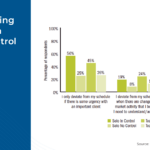Enjoy the current installment of "weekend reading for financial planners" - this week's edition kicks off with the big news that "robo" platform Financial Engines is acquired human-advisor-driven RIA The Mutual Fund Store for a whopping $560M, as Financial Engines acknowledges the growth limitations of lacking human advisors and the opportunity of having an in-person human presence with the clients advised on the firm's 401(k) platform.
From there, we have a few articles about looming regulatory reform, including predictions from Fi360's Blaine Aikin about how the Department of Labor's fiduciary proposal will unfold in the coming months (largely intact, but with a few concessions to the broker-dealer industry), a recent study from Morningstar suggesting that while the DOL's fiduciary proposal allows commissions to be paid to advisors who sign a best-interests contract with clients that in practice commissions may soon be dead, and a look at the latest warning shot from Senator Elizabeth Warren who is raising questions about the sales incentives that insurance companies pay out to annuity agents (particularly the non-cash compensation, like lavish trips for hitting big sales targets).
We also have a couple of technical articles this week, including a discussion of the U.S. Treasury's new MyRA accounts which came out of "beta" and into wide release this week, a good reminder that when crafting investment decisions based on views about the market and the economy that advisors should be wary not to make the strategies too complex, and a look at how dollar-cost-averaging is most likely to be an inferior investment strategy to just allocating a lump sum into the markets but may be appealing anyway from a risk-management perspective.
There are also a few practice management articles in this week's reading, including: tips to make your advisory firm more efficient operationally; how to develop a more standardized process for business development; and how to improve client engagement by utilizing a structured approach to crafting an agenda that is shared with each client in advance of a client meeting.
We wrap up with three interesting articles: the first is a review of the recent T3 Enterprise conference, where one of the big themes is whether all the recent FinTech merger and acquisition activity will cause even more companies to sell out and the already-acquired to lose their independent; the second is a look at a concerning new battle emerging between major banks and personal financial management dashboard Mint.com, as JP Morgan Chase and Wells Fargo recently cut off Mint's access to client bank accounts for a week in what may be a troubling "shot across the bow" to account aggregation providers; and the last is a look at how financial planning educational programs are beginning to adapt to advisory firm demands for better-trained students by incorporating courses on "softer" client communication skills and even sales and marketing classes, in addition to the usual content for technical competency.
And be certain to check out Bill Winterberg's "Bits & Bytes" video on the latest in advisor tech news at the end, including his coverage of the big news that Financial Engines has acquired The Mutual Fund Store, the T3 Enterprise conference, and two newly announced integrations - one between ShareFile and Smarsh to allow shared documents with clients to automatically be archived for compliance purposes, and the other between Quovo and Blueleaf.
Enjoy the reading!





